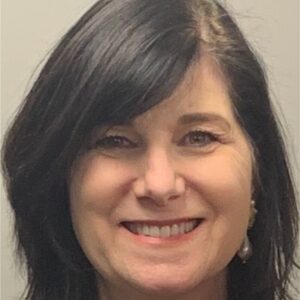Embezzlement: Is your facility susceptible?
Embezzle. An ugly word. One edition of Webster’s Dictionary defines it as “to take (e.g., money) for one’s own use in violation of a trust and by fraudulent means.” In the case of an employee embezzling from his or her employer, the employer’s trust is violated. What helps the embezzler remain undetected, often for years, are the “fraudulent means.”
As a special agent and public information officer for the Internal Revenue Service—Criminal Investigation Division, I have had the opportunity to review the facts and circumstances of several high-dollar embezzlements here in the Pacific Northwest where I work. These crimes were often successful for years, many netting at least $100,000. Fortunately, the perpetrators were eventually detected and prosecuted.
Embezzlement can happen to any business, including your nursing home facility. To get an idea of the methods that embezzlers use, I cite examples below from press releases issued by United States Attorney’s Offices, relative to three cases that my agency helped investigate. Two of the cases are resolved and the defendants have been sentenced. The first case, however, which involves allegations of an embezzlement specifically at a nursing home facility, is only at the indictment stage (i.e., the allegations have not been proven in a court of law). Therefore, the defendant’s name has been changed to “Smith” to preserve the presumption of innocence. All pronouns disclosing this person’s sex have been changed to “Smith.” I have also omitted the name of the nursing home facility. All three cases disclose methods that could be used against your facility and merit watchfulness.
Case One
“Smith was arraigned today on…[an]…indictment charging Smith with Theft…and Money Laundering relative to Smith’s alleged embezzlement from a…nursing facility. Smith was hired…as an accounts receivable clerk. Smith’s duties included receiving patient payments, preparing deposit slips, and depositing the funds into [the facility’s] business checking account. The indictment alleges that in February 2001, Smith set up [a]…corporation…[the] principal place of business was registered to Smith’s home address. Smith was the only registrant listed. Also in February 2001, Smith opened a checking account…under the name of [Smith’s corporation]. Smith was the only signor on the account. Between February 2001 and June 2005, Smith deposited checks that patients wrote for their care at [the facility] into this bank account, which Smith controlled. Smith manipulated the accounting records of [the facility] so that the missing funds would go unnoticed. After depositing the monies into Smith’s account, Smith used them to purchase personal items. Smith is alleged to have embezzled…[more than $700,000 during a four-year period]. As a result of Smith’s [alleged] embezzlement of the patient payments, [the facility] suffered significant financial problems, limiting their ability to provide services.”
Case Two
“…[Tiffany Lynn] Scott used her position as Finance Operations Manager with Southcentral Foundation, a tax-exempt nonprofit region health corporation…to divert company funds. From May 1999 until April 2003, Scott diverted company funds totaling at least $652,414.52. Scott employed five different methods to steal money. She applied Southcentral funds to personal credit cards in her name, her mother’s name, and her husband’s name; she used convenience checks issued to Southcentral to make payments to her and her family members’ credit card accounts; she diverted Southcentral checks to her or her family’s personal accounts; she used Southcentral credit card accounts to make and receive unauthorized cash advances; and she deliberately overpaid Southcentral credit card accounts and then diverted the overpayments to her and her family’s personal credit cards.” Scott was sentenced to 30 months in prison and ordered to pay $610,337.32 in restitution.
Case Three
“Robert Dale Henrie, age 52, former comptroller of Auto Service Company, pled guilty and was sentenced yesterday in Anchorage on federal charges for defrauding his employer of more than $100,000….Henrie pled guilty to mail fraud and money laundering, and received a sentence of 16 months’ imprisonment and will be required to make full restitution to his former employer…. Henrie, an accountant, set up a scheme to defraud Auto Service Company in Fairbanks of approximately $142,600. Henrie wrote 11 Auto Service Company checks, totaling approximately $68,100, to himself and deposited them in his personal bank account. To conceal the fraud from his employer, he allegedly reported the checks as ‘void’ in the books and records of the company. The indictment also alleged that Henrie defrauded Auto Service Company of approximately $74,500 by writing 13 company checks to various credit card companies, such as American Express and Bank of America, to pay his personal credit card bills. Henrie allegedly made it appear in the books and records of Auto Service Company that the 13 checks were in payment of the auto company’s bills.”
How to Avoid Embezzlement
First of all, do you remember President Ronald Reagan’s famous words “Trust, but verify”? Though Reagan was not discussing business matters, his words apply to those with whom you entrust your finances. An excellent source of information regarding how to “verify” and therefore detect and prevent embezzlement is located on the Small Business Administration’s Web site at https://www.sba.gov. Simply type the word “embezzlement” into that Web site’s search engine. A summary that I found helpful, “Curtailing Crime—Inside And Out,” is at https://www.sba.gov/library/pubs/cp-2.pdf. Also, you might ask your accountant to discuss how the flow of money into and out of your facility occurs. Ask the accountant to recommend changes if vulnerabilities are found.
Why Is the IRS Involved?
We are involved in these investigations because of the skills we have acquired over the past 90 years of investigating income tax violations by “following the money”—that is, tracing the flow of funds from their source to the perpetrator, and then to their disposition—usually personal expenditures (houses, cars, jewelry, etc.) by or on behalf of the perpetrator. We are also involved because embezzling money and then trying to hide that money often constitutes money laundering, a federal felony over which our agency has a shared jurisdiction. Money laundering is defined as the conversion of illegal or “dirty” money into funds or assets that appear to have come from legitimate or “clean” sources. Also a note to would-be embezzlers: All income, including illegal income such as embezzled funds, is taxable, with few exceptions.
What If Your Facility Is Victimized?
If you believe that your nursing home facility has been the victim of embezzlement, please contact law enforcement. If the amount involved is relatively small, local law enforcement might be your best initial contact. If the amount is substantial, however, one of your options would include contacting the IRS Criminal Investigation Division. Most large cities have an IRS office that you can either contact by telephone or visit in person. Another way to contact us is to visit https://www.irs.gov, where you can download a Form 3949-A, Information Referral. Simply complete this short form and submit it to the IRS using the instructions on the back.
Daniel Wardlaw is Special Agent and Public Information Officer for the Internal Revenue Service Criminal Investigation Division in Vancouver, Washington.
For further information, phone (360) 696-7642 or visit https://www.irs.gov. To send your comments to the author and editors, e-mail wardlaw0107@nursinghomesmagazine.com.
I Advance Senior Care is the industry-leading source for practical, in-depth, business-building, and resident care information for owners, executives, administrators, and directors of nursing at assisted living communities, skilled nursing facilities, post-acute facilities, and continuing care retirement communities. The I Advance Senior Care editorial team and industry experts provide market analysis, strategic direction, policy commentary, clinical best-practices, business management, and technology breakthroughs.
I Advance Senior Care is part of the Institute for the Advancement of Senior Care and published by Plain-English Health Care.
Related Articles
Topics: Articles , Operations











